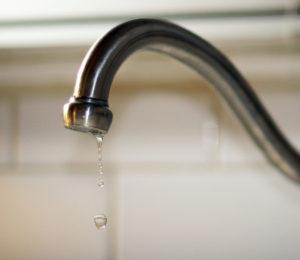Just because you say something is so doesn’t make it true.
It doesn’t make mercury dental amalgam safe. It doesn’t make root canal teeth sterile and inert. And it certainly doesn’t make fluoridation an effective practice for preventing caries.
 The sore lack of evidence supporting fluoridation was brought into the foreground again with last week’s publication of the latest Cochrane Review on two key issues: 1) Does water fluoridation help prevent caries?; and 2) Does it contribute significantly to dental fluorosis (mottling of tooth enamel)? What evidence do we actually have?
The sore lack of evidence supporting fluoridation was brought into the foreground again with last week’s publication of the latest Cochrane Review on two key issues: 1) Does water fluoridation help prevent caries?; and 2) Does it contribute significantly to dental fluorosis (mottling of tooth enamel)? What evidence do we actually have?
Analyzing 155 studies, the researchers found a significant association between fluoride levels in water and fluorosis. Notably, this was found at a level of 0.7 ppm – the level newly recommended by the US Department of Health and Human services to lower rates of fluorosis. That said, the authors also noted that the evidence was limited due to high bias and significant differences among the studies.
Similarly, they found that with the onset of fluoridation, caries rates dropped – but only among children. There was no evidence of benefit to adults. And there were a couple of very important “howevers” on this point.
First, 97% of the studies they looked at – in other words, almost all – were determined to be at high risk of bias and thus suspect. What’s more, most were done before fluoride was as widely available as it is today, so may not even apply any more – or at least not as much. After all, as we’ve noted before, fluoride is everywhere. We are hardly lacking for the stuff – one reason why HHS lowered its fluoride recommendation at all.
In light of all this, the authors could only conclude that
There is very little contemporary evidence, meeting the review’s inclusion criteria, that has evaluated the effectiveness of water fluoridation for the prevention of caries.
The available data come predominantly from studies conducted prior to 1975, and indicate that water fluoridation is effective at reducing caries levels in both deciduous and permanent dentition in children. Our confidence in the size of the effect estimates is limited by the observational nature of the study designs, the high risk of bias within the studies and, importantly, the applicability of the evidence to current lifestyles. The decision to implement a water fluoridation programme relies upon an understanding of the population’s oral health behaviour (e.g. use of fluoride toothpaste), the availability and uptake of other caries prevention strategies, their diet and consumption of tap water and the movement/migration of the population. There is insufficient evidence to determine whether water fluoridation results in a change in disparities in caries levels across SES. We did not identify any evidence, meeting the review’s inclusion criteria, to determine the effectiveness of water fluoridation for preventing caries in adults.
Nor did they find sufficient evidence that stopping fluoridation causes an increase in caries.
Many previous reviews – such as this and this – have focused more on the potential health (and sometimes environmental) risks of fluoridation. These weren’t a big concern here, but in a funny way, maybe that’s a good thing.
Let’s just pretend for a moment that swallowing fluoride is perfectly harmless. Let’s pretend there’s no health-related reason for avoiding the stuff.
There still would be a lack of evidence that it’s doing any good today. (Indeed, the simple fact that caries rates remain epidemic should make any reasonable person question whether fluoride actually helps.)
It’s like throwing money away.
Now consider what we know of the health risks. Such spending can then seem almost masochistic.
Considering the state of oral health in our country today, we’d do a lot better investing our money, time and energy into more effective strategies for prevention – things like promoting more healthful eating and physical activity; instilling better hygiene habits; improving access to quality care, especially for those in low income and other historically underserved groups. This would support good overall health and wellness, too.
But that’s too hard and complicated, some may say. Fair enough. But eventually we’re going to have to admit that the “easy” ways just haven’t been working. And what’s hard is usually worth more. As Tom Hanks says to Geena Davis in A League of Their Own,
It’s supposed to be hard. If it wasn’t hard, everyone would do it. The hard…is what makes it great.
And, we would add, worth doing – at the very least, striving for.
Image by Eric Norris, via Flickr